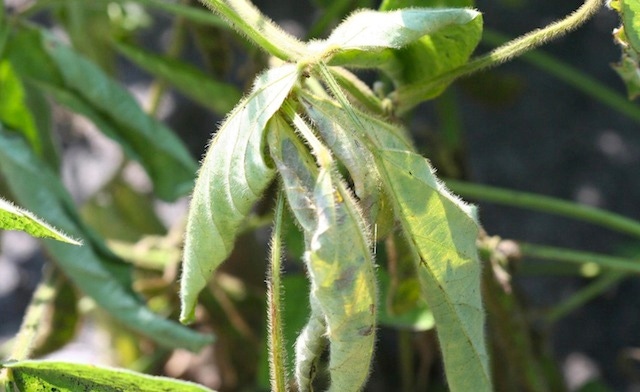June 26, 2013

Soybean diseases are most common when soil is very wet in the first few weeks after planting, especially in heavy, poorly drained, compacted or high-residue fields. If field conditions remain cold and wet, DuPont Pioneer experts recommend scouting untreated soybeans for seedling diseases such as Phytophthora, Pythium, Fusarium and Rhizoctonia.
Pythium and Phytophthora are associated with wet, waterlogged conditions. Pythium is more active in cooler soils (50-60° F), while Phytophthora is more active in warmer soils above 60°. Pythium may be the first soybean disease found in the growing season. Symptoms are commonly referred to as damping off, with seeds germinating but rotting before emergence, or small seedlings that wilt and die.
Phytophthora symptoms include a dark discoloration of the stem, usually beginning at the soil line. Diseased tissues quickly become soft and water-soaked. Wilting and plant death may soon follow. Most Pioneer brand soybean varieties have the Rps 1k gene forPhytophthora resistance and field tolerance.
Rhizoctonia is more often found in late-planted soybean fields. It appears as the weather becomes warm (around 80° F) and is more common in wet to moderately wet soils where germination is slow or emergence is delayed. It is characterized by a shrunken, reddish-brown lesion on the hypocotyl at or near the soil line. The infection may be superficial, causing no noticeable damage, or may girdle the stem and kill or stunt plants.
Fusarium causes discoloration and decay of the lower taproots and lateral roots. The disease is most common in poorly drained, waterlogged soils. However, if the pathogen is present, it can also infect drought-stressed plants in dry soil conditions. Fusarium is common in many soils but often goes unnoticed in the presence of Pythium, Phytophthora and Rhizoctonia symptoms.
Like what you're reading? Subscribe to CSD Extra and get the latest news right to your inbox!
According to Pioneer, several practices can reduce the incidence of seedling blights, including seed treatments and good cultural practices – such as planting into a fit seedbed, avoiding compaction and maintaining proper fertility and pH levels – also contribute to overall plant health and make seedling blights less likely to occur.
To track field notes about these soil-borne diseases and other agronomic challenges, utilize the Pioneer Field360 Notes app. For more information, contact your Pioneer salesprofessional or visit pioneer.com.
You might also like:
Assessing Flood Damage to Soybeans
You May Also Like




